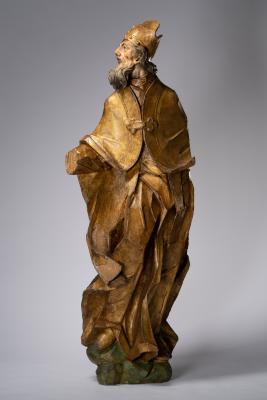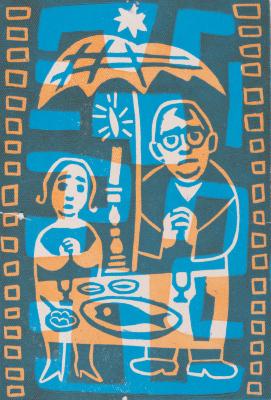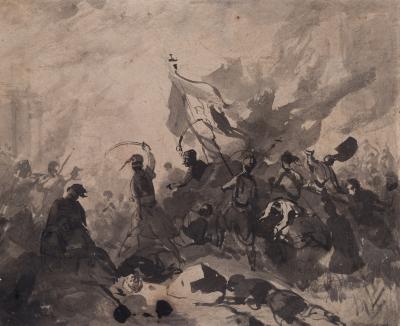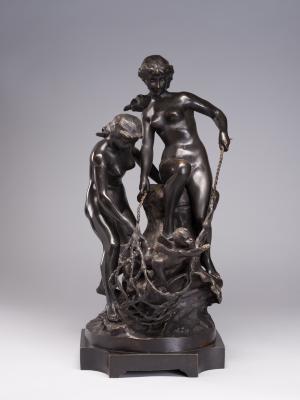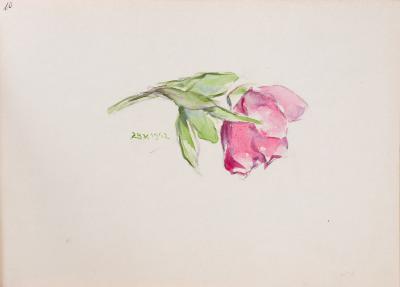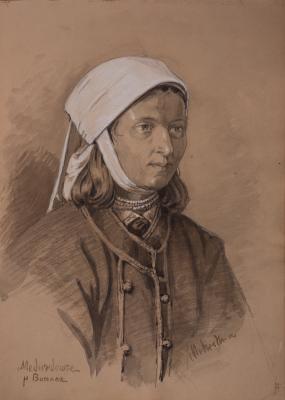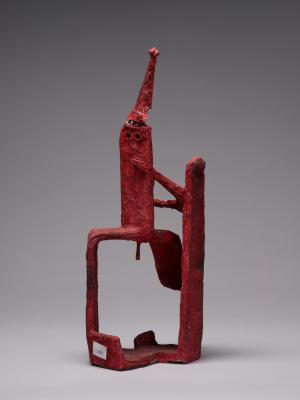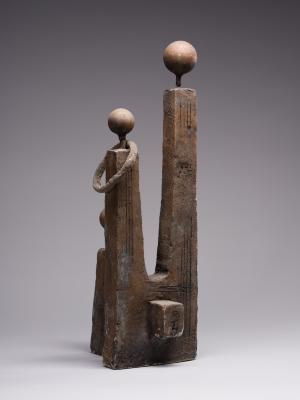This is a bust-length image of a man depicted against the background of fresh spring greenery. The city buildings with terracotta roofs and a tower are visible on the horizon. The portrait is made in the realistic manner, though supplemented by symbolic signs characteristic of Malczewski's paintings; the man holds a sheet of paper in his hands, and his thoughtful gaze is directed downwards, just above the sheet. Given the emotions of the portrayed man, one can assume that the contents of the letter is important for him. The man is dressed in the fashion of those times, namely in a three-piece suit. Approximately from 1910, the suit began to get rid of complex elements. Frock coats were substituted by loose jackets, which men wore for informal and semi-formal evenings. As a rule, men wore three-piece suits, which consisted of loose jackets, and matching vests and pants. The informal character of the portrait is also emphasized by the unfastened top buttons on the shirt and the lack of a tie. The man's hair is short, and his mustache is curled. Mustaches became a symbol of modern man in the early 20th century; by the end of the 19th century, the fashion for beards finally passed, as they were worn only by the elderly and conservatives. Such changes were facilitated, among other things, by the discovery of bacteria, as the press began to publish articles that facial hair contributed to the spread of infections.












